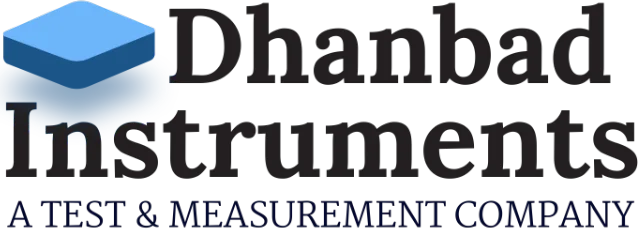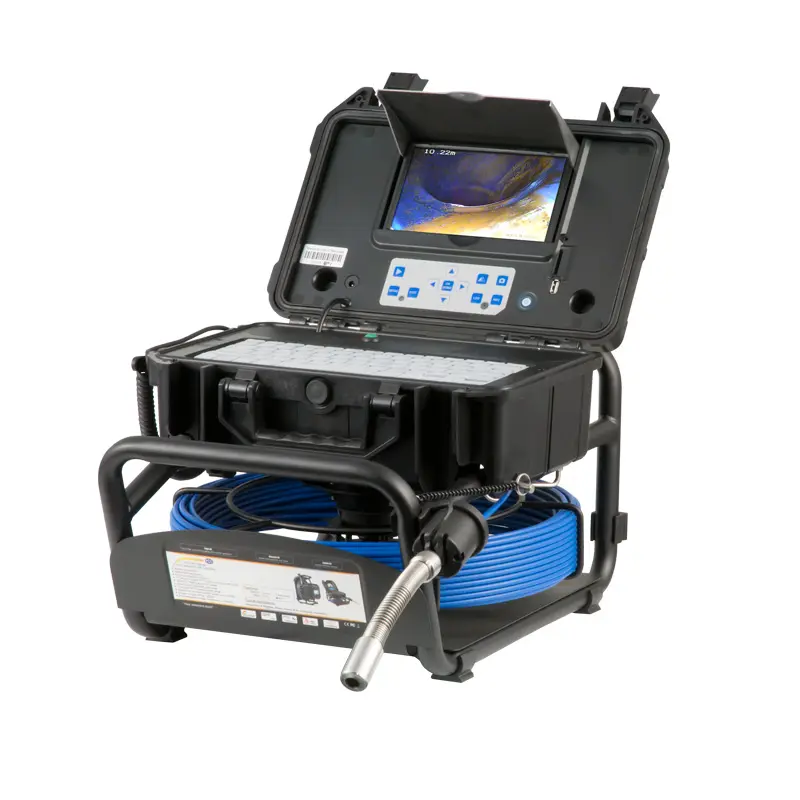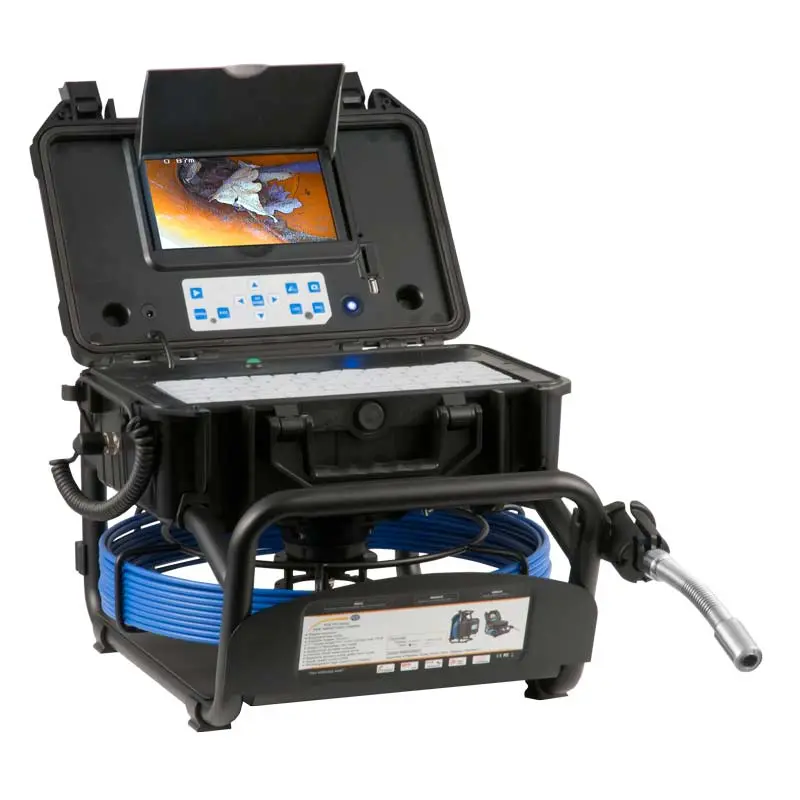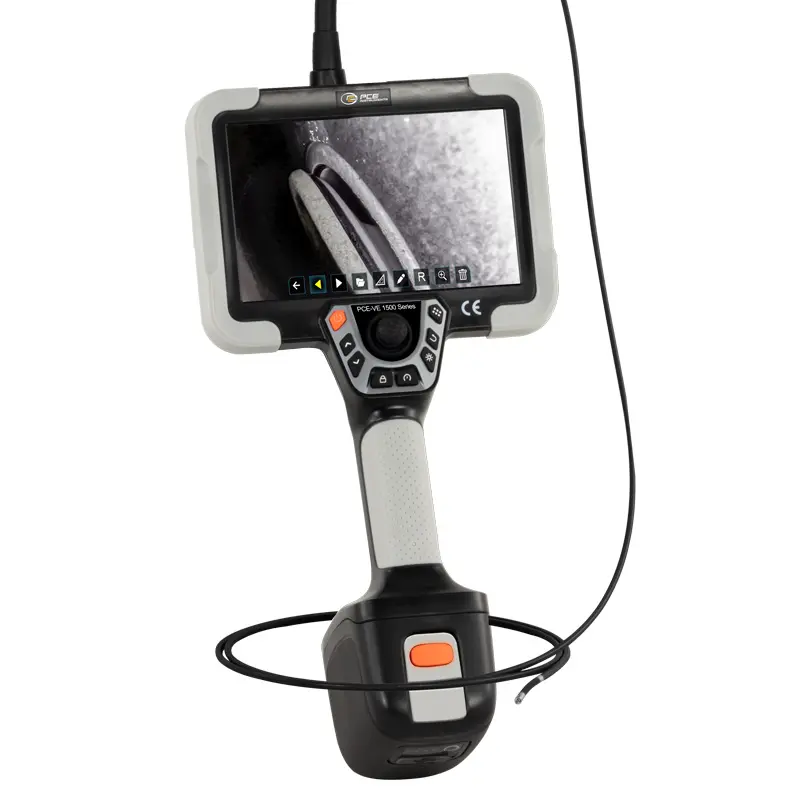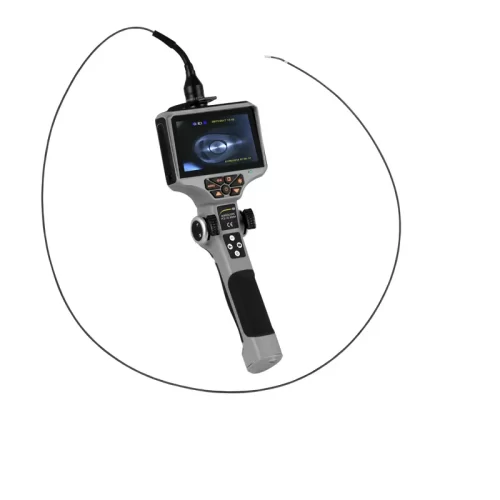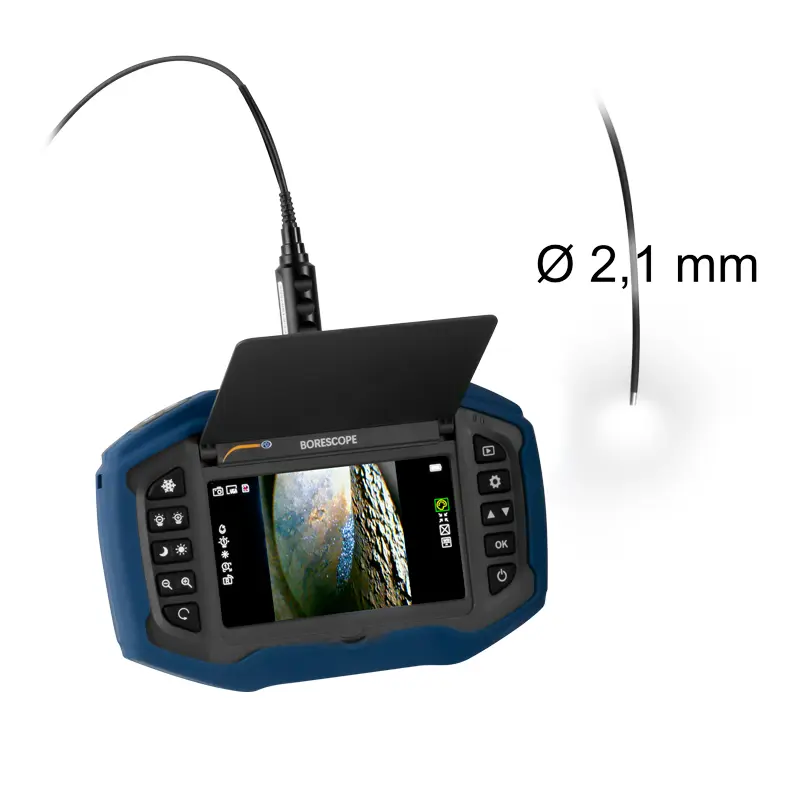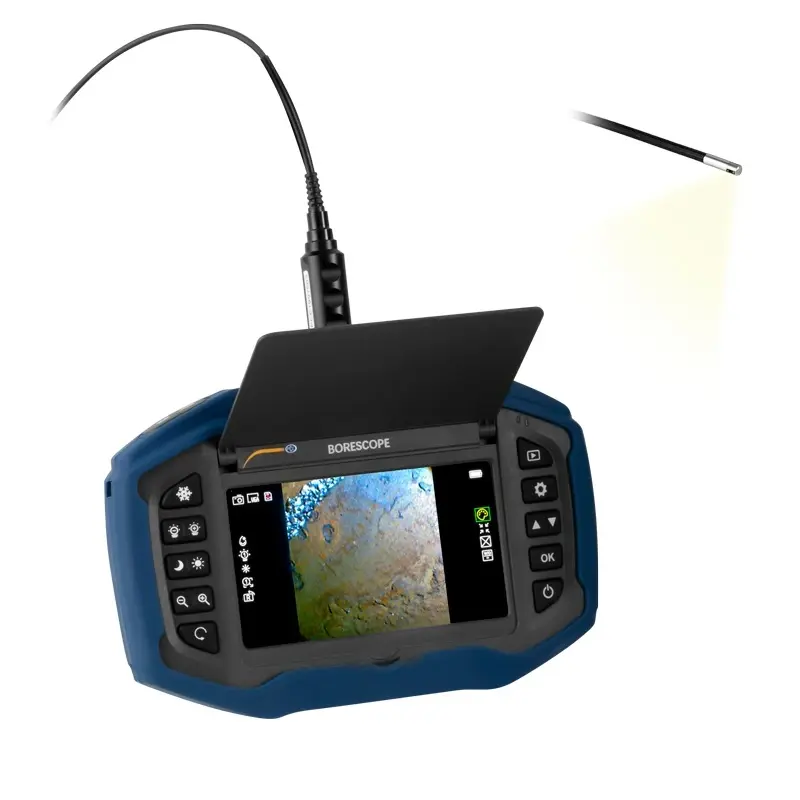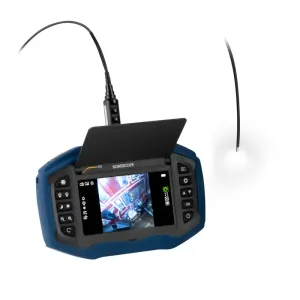Borescope Inspection Camera
An Industrial Borescope Inspection Camera is used to inspect hard-to-reach areas, pipelines, borewells, engines, drains, sewer pipes, heating vents, air ducts, furnaces, motors, pistons, gears, valves, compressors, boilers, and condenser tubes. In the dynamic world of manufacturing and industrial processes, precision and quality control are paramount. To ensure seamless operations, pinpointing potential issues before they escalate is not just an advantage—it’s a necessity.
At Dhanbad Instruments, we take immense pride in being the leading manufacturer and supplier of industrial borescope inspection cameras in India. Whether you’re a plumber, mechanic, or just someone who needs to inspect hard-to-reach areas, a borescope can be an invaluable tool. So next time you find yourself needing to inspect a pipe or engine, consider using a borescope for a quick and efficient solution.
Thanks to flexible cables and lightweight enclosures, borescope cameras are extremely agile and mobile. An industrial borescope inspection camera helps you locate potential problems quickly and easily without the need to dismantle a system or machine, allowing corrective measures to be taken before costly downtime occurs.
- Cable diameter / head diameter: 23 mm / 0.9 in
- 40 m / 131 ft push cable
- Electronic meter count
- Battery and mains operation
- Waterproof up to 20 m / 66 ft
- Cable diameter / head diameter: 23 mm/ 0.9 in
- 20 m / 66 ft push cable
- Electronic meter counting
- Battery and mains operation
- Waterproof up to 20 m / 66 ft
- Diameter camera head: 8.5 mm / 0.33 in
- Cable length: ca. 90 cm / 2ft 11 in
- 3.5″ TFT LC-Display
- 4x optical zoom
- Viewing angle 60°
- 6 white, dimmable LEDs on the camera head
- Memory option on Micro SD card
- Borescope camera cable length: 2 m / 6.5 ft
- Cable diameter: 6mm / 0.23″
- Direction of view of the camera frontal
- Camera resolution 1 million pixels
- Camera viewing angle 120°
- Focusing distance 10 … 100 mm / 0.39 … 3.9″
- Flexible camera head length 60 mm / 2.3″
- Radius at 90° bend 50 mm / 1.9″
- 7″ touch screen for easy operation
- replaceable battery with status display
- Storage of recording on SD card
- Motor with endoscope cable can be changed quickly
- HDMI connection for direct image transmission
- Cable / head diameter: 2.8 mm
- Direction of movement camera head: 4-way
- Camera head length: 8 mm
- Bending radius: 7 mm
- 1.5 m / 4.9 ft endoscope cable- 4-way camera
- 5″ monitor
- Image and video memory
- IP58 camera cable
- 400 x 400 pixel image resolution
Highlight
- Cable Length: 1000 mm (3.28 ft)
- Cable Diameter: 2.1 mm (0.08″)
- 0° Viewing Angle for Precision
- High-Resolution Camera / Image Sensor: 400 x 400 Px
- Flexible Cable for Versatile Navigation
- Crisp Video Output via HDMI
- Illuminated with High-Intensity LED Lights
- Cable length: 2000 mm, 6.56 ft
- Cable diameter: 3 mm, 0.11″
- Camera resolution / image sensor: 400 x 400 Px
- Cable type: flexible
- Video output: HDMI
- Cable length: 2000 mm, 6.56 ft
- Cable diameter: 2.8 mm, 0.11″
- 0° viewing angle
- Camera resolution/image sensor: 400 x 400 Px
- Cable type: flexible
Tips on Buying an Industrial Borescope Inspection Camera
Introduction
Industrial borescope inspection cameras have become essential tools in various industries for inspecting and diagnosing hard-to-reach areas. Whether you’re in manufacturing, automotive, aviation, or any field that requires precision inspections, choosing the right borescope camera is crucial. In this comprehensive guide, we’ll walk you through the key factors to consider when purchasing an industrial borescope inspection camera. From types and features to accessories and budget constraints, we’ll provide you with valuable insights to make an informed decision.
Table of Contents
1. Types of Industrial Borescope Inspection Cameras
2. Essential Features to Look For
3. Choosing the Right Borescope Length and Diameter
4. Image and Video Quality
5. Lighting Options
6. Articulation and Maneuverability
7. Accessories and Additional Tools
8. Durability and Build Quality
9. Battery Life and Power Source
10. Budget Considerations
11. Top Brands in Industrial Borescope Inspection Cameras
12. Maintenance and Care
13. Conclusion
1. Types of Industrial Borescope Inspection Cameras
Industrial borescope inspection cameras come in various types, each designed for specific applications. Before making a purchase, it’s crucial to understand the different types available. The most common types include:
– Rigid Borescopes: These are straight and inflexible, ideal for applications that require a straight-line inspection, such as engine cylinders and pipelines.
– Flexible Borescopes: Flexible borescopes have a bendable shaft. It making them suitable for inspections of curved and contoured surfaces, like plumbing systems or HVAC ducts.
– Semi-Rigid Borescopes: Semi-rigid borescopes offer a compromise between rigidity and flexibility, making them versatile for various applications.
– Videoscopes: Videoscopes come equipped with a camera at the tip and a display screen for real-time inspection. They are excellent for capturing high-quality images and videos.
– Fiberscopes: Fiberscopes use a bundle of optical fibers to transmit images, making them durable and resistant to harsh environments. They are often used in industrial applications with extreme conditions.
2. Essential Features to Look For
When selecting an industrial borescope inspection camera, consider the following key features:
– High-Resolution Display: A clear and high-resolution display is essential for accurate inspections. Look for models with at least 1080p resolution.
– Adjustable Brightness: Adjustable LED lighting is vital to illuminate dark areas effectively. Ensure the camera offers adjustable brightness settings to control the lighting as needed.
– Zoom Functionality: A zoom feature can be invaluable for close-up examinations. Look for cameras that offer both optical and digital zoom options.
– Image Capture and Video Recording: The ability to capture images and record videos directly on the device is useful for documentation and analysis. Check for cameras with a built-in storage option or compatibility with external storage devices.
– Wireless Connectivity: Some modern borescope cameras offer wireless connectivity. It allows you to transfer images and videos to other devices, such as smartphones or tablets, for easier sharing and analysis.
– Durability: Industrial environments can be harsh, so choose a borescope inspection camera built to withstand tough conditions. Look for features like water resistance and shock resistance.
3. Choosing the Right Borescope Length and Diameter
The length and diameter of the borescope camera are critical factors in determining its usability for specific applications. Here’s what you need to consider:
– Length: Longer borescopes are suitable for deep inspections, such as examining the internal components of an engine. Shorter borescopes are more convenient for inspecting narrow or confined spaces.
– Diameter: The diameter of the borescope should be small enough to access the target area without causing any damage. However, a smaller diameter may result in lower image quality.
4. Image and Video Quality
The primary purpose of an industrial borescope inspection camera is to provide clear and detailed images and videos of the inspected area. To ensure high-quality visuals, focus on the following aspects:
– Resolution: Look for borescopes with higher resolutions, as they will produce sharper images and videos. A resolution of 1080p or higher is recommended for most industrial applications.
– Frame Rate: A higher frame rate ensures smoother video playback. For industrial inspections, a frame rate of at least 30 frames per second (FPS) is desirable.
– Image Enhancement: Some borescopes offer image enhancement features like digital noise reduction and image stabilization. Which can greatly improve the quality of your inspection results.
5. Lighting Options
Proper illumination is crucial for a successful inspection, especially in dark or hard-to-reach areas. Consider the following lighting options:
– LED Illumination: LED lights are commonly used in borescope cameras for their energy efficiency and long lifespan. Make sure the camera offers adjustable LED brightness settings to suit various environments.
– Directional Lighting: Some borescopes come with adjustable lighting direction. It allows you to focus the light where it’s needed most. This feature can be particularly helpful for intricate inspections.
– Dual Lighting: Cameras with both front- and side-facing LED lights provide versatility. It also allows you to choose the best lighting angle for each situation.
6. Articulation and Maneuverability
The ability to navigate and inspect hard-to-reach areas with precision is a critical factor in choosing the right industrial borescope inspection camera. Articulation and maneuverability features to look for include:
– Flexible Shaft: A flexible or articulating shaft enables the camera to bend and navigate around obstacles, making it suitable for inspecting curved or contoured surfaces.
– Joystick Control: Some borescopes are equipped with a joystick or remote control that allows for 360-degree rotation and precise maneuvering.
– Steerable Tip: Certain borescopes have a tip that can be steered in multiple directions, providing enhanced control and access to the inspection area.
7. Accessories and Additional Tools
To get the most out of your industrial borescope inspection camera, consider the availability of useful accessories and additional tools, such as:
– Extension Cables: Extension cables are handy for extending the reach of your borescope, allowing you to inspect deeper or longer areas.
– Interchangeable Tips: Some borescopes offer interchangeable tips, such as a magnetic tip or a hook, which can be useful for specific inspection tasks.
– Carrying Case: A durable carrying case is essential for protecting your borescope during transportation and storage.
– Calibration Tools: Calibration tools ensure that your borescope’s measurements and images are accurate and reliable.
8. Durability and Build Quality
Industrial environments can subject your borescope camera to tough conditions, so it’s crucial to choose a camera with a durable build. Key factors to consider include:
– Water Resistance: Look for cameras with at least an IP67 rating, which indicates resistance to water and dust. Higher ratings, like IP68 or IP69, provide even better protection.
– Shock Resistance: A shock-resistant camera can withstand accidental drops and impacts, ensuring its longevity in the field.
– Material Quality: Durable materials like stainless steel and reinforced plastics contribute to a longer lifespan for your borescope.
9. Battery Life and Power Source
The battery life of your borescope inspection camera is important, as frequent recharging or changing batteries can be inconvenient in the middle of an inspection. Consider the following:
– Battery Type: Lithium-ion batteries are
common in borescopes due to their long-lasting performance and quick charging capabilities.
– Battery Life: A longer battery life ensures that you can complete extended inspections without interruption. Look for cameras with a battery life of at least 4-6 hours.
– Power Source: Some borescopes can also be powered via USB, which can be convenient when an electrical outlet is readily available.
10. Budget Considerations
Your budget is a significant factor when choosing an industrial borescope inspection camera. While it’s important to invest in a high-quality camera, it’s also crucial to find a model that fits your budget. Consider the following tips:
– Set a Budget Range: Determine your budget range before starting your search. This will help you narrow down your options.
– Prioritize Features: Identify the must-have features for your specific applications and allocate a significant portion of your budget to them.
– Consider Long-Term Value: While a higher initial investment might be required, a durable and reliable borescope can provide long-term value and cost savings.
– Look for Deals and Promotions: Keep an eye out for special promotions, discounts, and package deals that can help you get more for your money.
11. Top Brands in Industrial Borescope Inspection Cameras
Choosing a reputable brand is essential to ensure the quality and reliability of your borescope camera. Here are some top brands known for their industrial inspection equipment:
– PCE Instruments
– Triplett
– METERIVA
When considering a brand, look for customer reviews and recommendations to gauge the satisfaction of other users.
12. Maintenance and Care
Proper maintenance and care are essential to extend the lifespan and performance of your industrial borescope inspection camera. Here are some tips to keep your device in top condition:
– Clean the Camera Tip: After each use, clean the camera tip with a soft, lint-free cloth to remove any debris or contaminants.
– Store Properly: Always store your borescope in its protective case to prevent damage or dust accumulation.
– Follow Manufacturer’s Recommendations: Adhere to the manufacturer’s guidelines for maintenance and calibration to ensure accurate readings and measurements.
– Inspect Cables and Connectors: Regularly check the condition of the cables and connectors to prevent signal disruptions or image quality issues.
– Calibrate as Needed: Calibrate your borescope as recommended by the manufacturer to maintain accuracy in your inspections.

13. Conclusion
Purchasing the right industrial borescope inspection camera is essential for a wide range of applications, from maintenance and repair to quality control and non-destructive testing. By considering the types, essential features, camera length and diameter, image and video quality, lighting options, articulation and maneuverability, accessories, durability, battery life, and budget constraints, you can make an informed decision that best meets your specific needs.
It’s important to research thoroughly, read user reviews, and, if possible, test the borescope in your intended work environment before making a purchase. Additionally, don’t forget to factor in long-term value, as a high-quality borescope can save you time and money in the long run. With the right industrial borescope inspection camera in your toolkit, you can conduct precise inspections and ensure the safety and efficiency of your operations.
In summary, choosing the ideal industrial borescope inspection camera requires careful consideration of your specific requirements, budget constraints, and the features that matter most to you. With this guide, you’re now well-equipped to make an informed decision and invest in a reliable tool that will serve you well in your professional endeavors.
